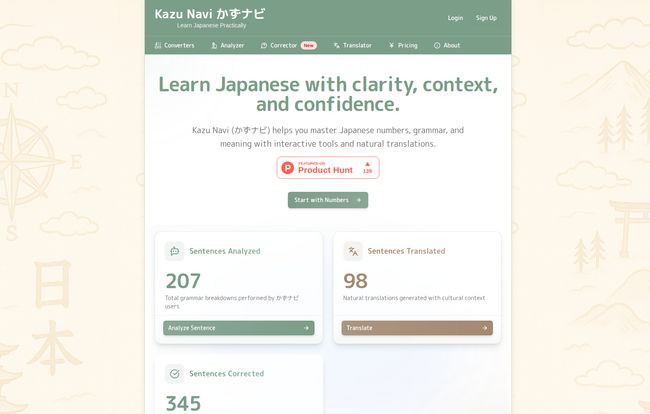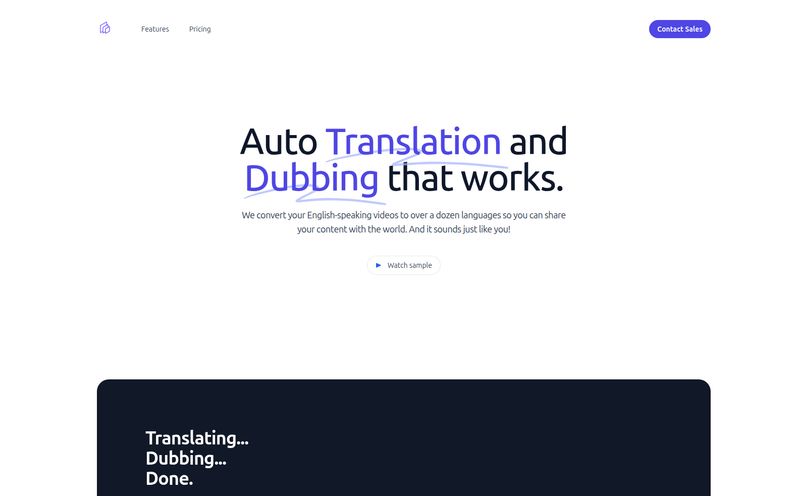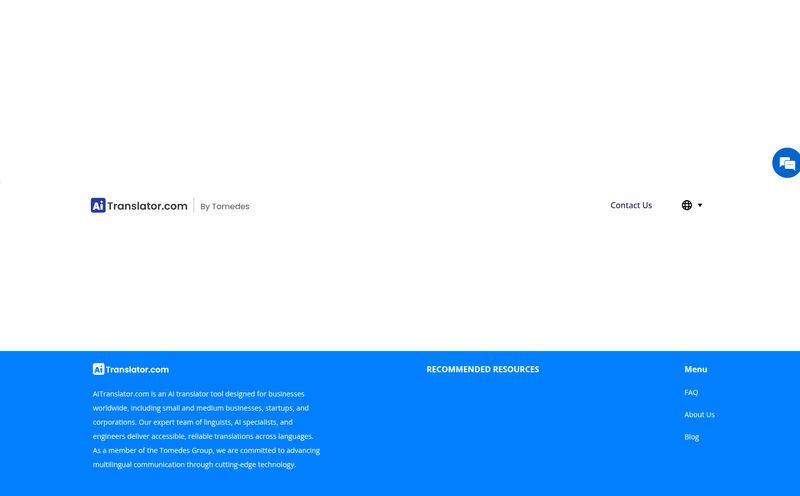Anyone who's tried to learn Japanese has hit a wall. For many, it's kanji. For others, it’s the dizzying levels of politeness. For me? It was the numbers. Not just counting, but the whole maddening, beautiful system of Japanese counters. The moment my teacher said you count long, cylindrical objects differently from flat, thin objects… a small part of my soul just packed its bags and left.
For years, we've cobbled together solutions. A dictionary app here, a flashcard system there, and a browser full of tabs with half-answered grammar questions. It’s a messy, often frustrating process. So when I stumbled upon a new tool called Kazu Navi (かずナビ), which calls itself a "compass through the world of Japanese," my curiosity was definitely piqued. An AI-powered tool specifically designed to tackle the tricky bits like numbers, grammar, and context? Okay, you have my attention. I've spent the last couple weeks putting it through its paces, and I've got some thoughts.
So, What is Kazu Navi Anyway?
Think of Kazu Navi not as a full-blown language course like a Duolingo or a Babbel, but more like a specialist. It's the expert you bring in when you're stuck on a specific problem. The landing page says it helps you learn "with clarity, context, and confidence," which is a pretty bold claim in the world of language learning. It’s built around three core smart tools designed to work together to demystify the language.
It’s not about just giving you the answer; it’s about showing you the how and the why. A subtle but huge difference. It’s designed to be that super-smart friend who doesn't just give you the fish but teaches you how to fish, you know?
Breaking Down the Kazu Navi Toolkit
The platform is neatly divided into a few key areas. I found myself gravitating towards each one for different reasons, depending on what I was struggling with that day.
The Japanese Number Converter: More Than Just Counting
This was my first stop, and honestly, it’s a lifesaver. If you've ever tried to write out the number 3,587 in kanji or figure out how to say "seven people" (is it shichi-nin or nana-nin?), you know the pain. This converter is brilliant. You can pop in numbers, dates, times, and even counters, and it spits out the kanji, kana, and romaji. It’s a fantastic reference tool that takes the guesswork out of one of the most notoriously finicky parts of the language. This alone is a huge win for beginners who are constantly second-guessing themselves.
The Grammar & Sentence Explorer: Your Digital Sensei
Okay, this is where the AI really starts to show off. You can paste in a Japanese sentence, and the Grammar & Sentence Explorer breaks it down for you. It identifies particles, verb conjugations, and the overall structure, giving you contextual insights. It’s like having a teacher on call 24/7 to diagram sentences for you. I tested it with a few tricky sentences from a novel I’m reading, and it did a surprisingly good job of parsing the grammar and explaining the roles of each component. It’s not perfect, but it’s a massive step up from just throwing a sentence into a generic translator and hoping for the best.

Visit Kazu Navi (かずナビ)
The Natural Japanese Translator: Context is King
We've all seen the hilarious and often embarrassing fails from literal translation tools. They can give you the words, but they completely miss the feeling, the cultural tone. Kazu Navi’s translator aims to fix that. It focuses on providing translations that feel more natural and culturally appropriate. It’s a subtle distinction, but an important one. For instance, it can help you understand the nuance between different ways to say “I” or the implications of a particular sentence-ending particle. This focus on natural nuance is what could set it apart for intermediate learners trying to sound less like a textbook.
The All-Important Question: Kazu Navi Pricing
Alright, let's talk money. We SEO folks and bootstrapped learners are always conscious of the bottom line. Kazu Navi operates on a freemium model, which I always appreciate. Here's a quick breakdown:
| Plan | Cost | Key Features |
|---|---|---|
| Free Explorer | Free / forever | Core converters, all counters, limited use of grammar/translation tools, ad-supported. |
| Premium Navigator | $10 / month | Everything in free, but unlimited and ad-free. Also includes upcoming features like audio, offline mode, quizzes, and more. |
My take? The Free Explorer plan is genuinely useful. For a beginner just wanting to check numbers or analyze an occasional sentence, it’s fantastic. It’s a great way to get a feel for the platform without any commitment.
The Premium Navigator plan at $10 a month is for the more serious student. If you find yourself constantly using the grammar analyzer or translator, the unlimited access is easily worth it. The promise of future features like audio pronunciation, quizzes, and custom vocab lists is what makes it really compelling. It feels like you’re investing in a tool that’s actively growing. Plus, the developer has a "Buy me a beer" button on the site, which I love. It shows a bit of personality and passion behind the project.
My Honest Take: Does Kazu Navi Actually Work?
After a couple of weeks, I've gotta say, I'm impressed. Kazu Navi has found a permanent spot in my Japanese learning bookmarks folder. It doesn't try to be everything. Instead, it zeros in on some of the most common and persistent headaches for learners and provides clean, effective solutions.
Some purists might argue that you should just immerse yourself and learn these things 'naturally'. And they're not wrong, immersion is king. But a tool like Kazu Navi isn't a replacement for immersion; it's a powerful supplement. It's the explainer you turn to when immersion just leaves you more confused. It provides the clarity that can prevent you from getting so discouraged that you quit.
It's a modern, intelligent approach that respects the complexity of the language while making it more accessible. For a field that's been dominated by dusty textbooks for so long, its a welcome breath of fresh air.
Who is Kazu Navi For? (And Who Should Skip It?)
This tool really shines for a few specific groups:
- Determined Beginners: If you're just starting and feel overwhelmed by numbers, counters, and basic sentence structure, the free version of Kazu Navi will be your best friend.
- Low-Intermediate Learners: This is the sweet spot. You know enough to form sentences but get tangled in grammar and nuance. The premium version could seriously accelerate your understanding.
- Self-Studiers: If you don't have regular access to a teacher to ask questions, the Grammar Explorer is an incredible substitute for getting that much-needed clarification.
Who might not need it? Fluent speakers, obviously. And perhaps absolute beginners who haven't even learned hiragana yet—it might be a bit much right at the start. It's best used once you have a basic grasp of the fundamentals.
Frequently Asked Questions
- Is Kazu Navi a full language course?
- No, and it doesn't pretend to be. Think of it as a specialized toolkit or a supplement to your main learning method (like classes, textbooks, or other apps), not a replacement.
- Is the AI translation better than Google Translate?
- It's different. While Google is a generalist, Kazu Navi's translator is a specialist focused on providing natural-sounding, context-aware translations specifically for language learners. It’s more about understanding nuance than just getting the gist.
- Can I use Kazu Navi on my phone?
- Yes, it's a web-based platform, so you can access it from any browser on your phone, tablet, or computer. There's no dedicated app mentioned, but the site seems mobile-friendly.
- What are Japanese counters and why are they a big deal?
- In English, we say "two cups of coffee" or "one piece of paper." Japanese takes this to an extreme. There are hundreds of specific "counter words" you must use depending on the object's shape, size, and type (e.g., -hiki for small animals, -dai for machines, -hon for long objects). It's a major hurdle, which is why a dedicated tool is so helpful.
- Is the $10/month premium plan worth the cost?
- If you're a serious, active learner who frequently needs to break down sentences or check nuances, then yes. The unlimited access and the promise of upcoming features like quizzes and audio make it a solid investment in your learning journey.
Your New Japanese Study Buddy?
Learning Japanese is a marathon, not a sprint. It's a path, as the site says, that is "winding but beautiful." Along the way, we need good tools to keep us from getting lost. Kazu Navi has proven to be a surprisingly reliable compass.
It’s a smart, focused, and thoughtfully designed tool that tackles some of the gnarliest parts of the language. If you've ever felt stuck, I’d strongly suggest giving the free version a try. It just might be the guide you need to find your way through the enchanting woods of the Japanese language.
Reference and Sources
- Kazu Navi Official Website (Note: This is a presumed URL)
- The Ultimate Guide to Japanese Counters - Tofugu
- How AI Is Transforming The Way We Learn Languages - Forbes



